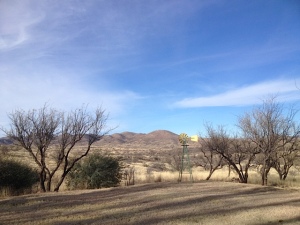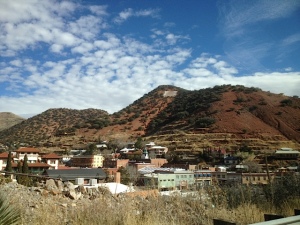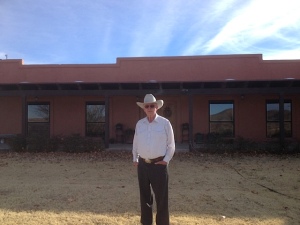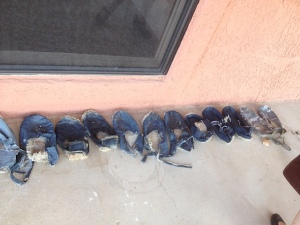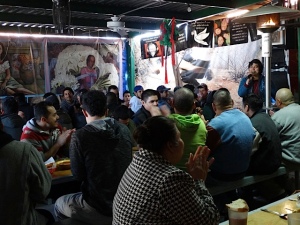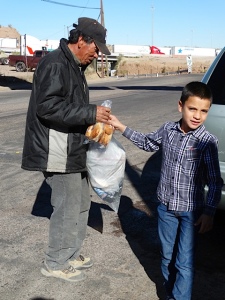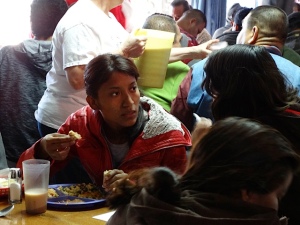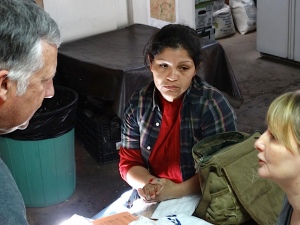Where to begin? After two amazing weeks of travelling Arizona as research for my feature film, ‘Anchor Baby’, I’m home. What did I discover about the world of my story?
Accompanied by my friend Doris, we flew into Phoenix, then drove down to Tucson, then south to Nogales on the border, in search of the reality behind the events I had written in my feature length drama.
Every day in Arizona, I fell in love with the landscape. Everyone had said it but I just wasn’t prepared. It’s beautiful.
I must have taken a thousand photos. None of them will make it into my movie but all are sketches for the world I want to describe.
I did a photo shoot in the mountains around Phoenix with a ten year old Mexican girl. In my story the girl crosses the desert to find her Mum and so we took some shots to suggest that journey.
It was just me, a camera, the girl and her Mom and my friend Mary, a local teacher who had helped me set it up. But this girl became Elena, the girl in my story.
My script is about undocumented migrants on the US/Mexican border and many of the people I interviewed could not go on the record. Immigration is a hot topic in the States right now – but beneath the political posturing and TV sound bites showing polarised factions, the reality is hugely complex and moving.
All the people I met spoke from personal experience of living on the border and all expressed feelings I could relate to, from the recently deported migrant to the rancher whose land they had crossed – supposedly enemies but both bound by the same reality – that a once more relaxed border is now a war zone, controlled by the cartels and policed with difficulty.
Jim, whose ranch is on the Mexican border, has thousands of migrants smuggled across his land every year, alongside numerous drug runs.
What united the Arizonians I spoke to was a feeling they were misunderstood by the rest of the country and abandoned by central government. As one local immigration judge put it to an East Coast liberal , who questioned ‘Operation Streamline’, the new fast track legal process for detention and deportation – ‘Where are you from? If you don’t have a border, you don’t have a problem.’ The sheer scale of the problem and the dominance of the cartels in drug and people smuggling make for tough decision making, torn loyalties and fear along the border.
The most inspiring place we visited was the soup kitchen run by the charity Kino Border Initiative for recent deportees on the Mexican side of border town Nogales, a common crossing point.
People are often deported from the States in the middle of the night with no money and far from their original homes in Mexico or Central America. KINO gives them a hot meal, clothing, a phone call to their relatives, basic medical care, and someone to talk to. This tiny makeshift building is full of positive energy and served almost 50,000 migrants last year.
KINO and a few other humanitarian groups along the border provide some of the only aid available to migrants. Although admirably non-partisan, they were clearly disappointed by the huge increase in deportations under the Obama administration.
The most moving encounter I had was with a recently deported Mexican woman.
Fourteen years ago, she had crossed the desert to come to America. It had taken her a week, carrying her three year old. She had worked in the US for fourteen years and raised three children there. One day she was stopped while riding her bicycle, her papers were checked, she was found to be undocumented and deported. Her three children are with a friend in Arizona while she is trapped on the Mexican side with no way back. Her only option now is to return to Mexico and then try and bring her US raised children back to the impoverished town she came from.
There are no easy answers but nothing about this deportation seemed right.
It has been a privilege to meet the people of Arizona whose stories I am trying to tell. I only hope I can do them justice as I move forward into the script, writing and rewriting my story to reflect the responsibility and affection I feel towards everyone I have met along the way.
Thank you to everyone we met on this trip. You took us into your homes and showed us great generosity. We will let you know how the movie develops!
To help migrants by supporting the work of the Kino Border Initiative click here .
You can read more about my trip and my US indy feature ‘Anchor Baby’ in the forthcoming March issue of Digital Filmmaker Magazine.
Additional photography by Doris Zajer and Jack Dalleywater, many thanks.
Get in touch here or find me at @emlin32 and info@emmalindley.net Happy Travels, and may the story you’re looking for find you.



